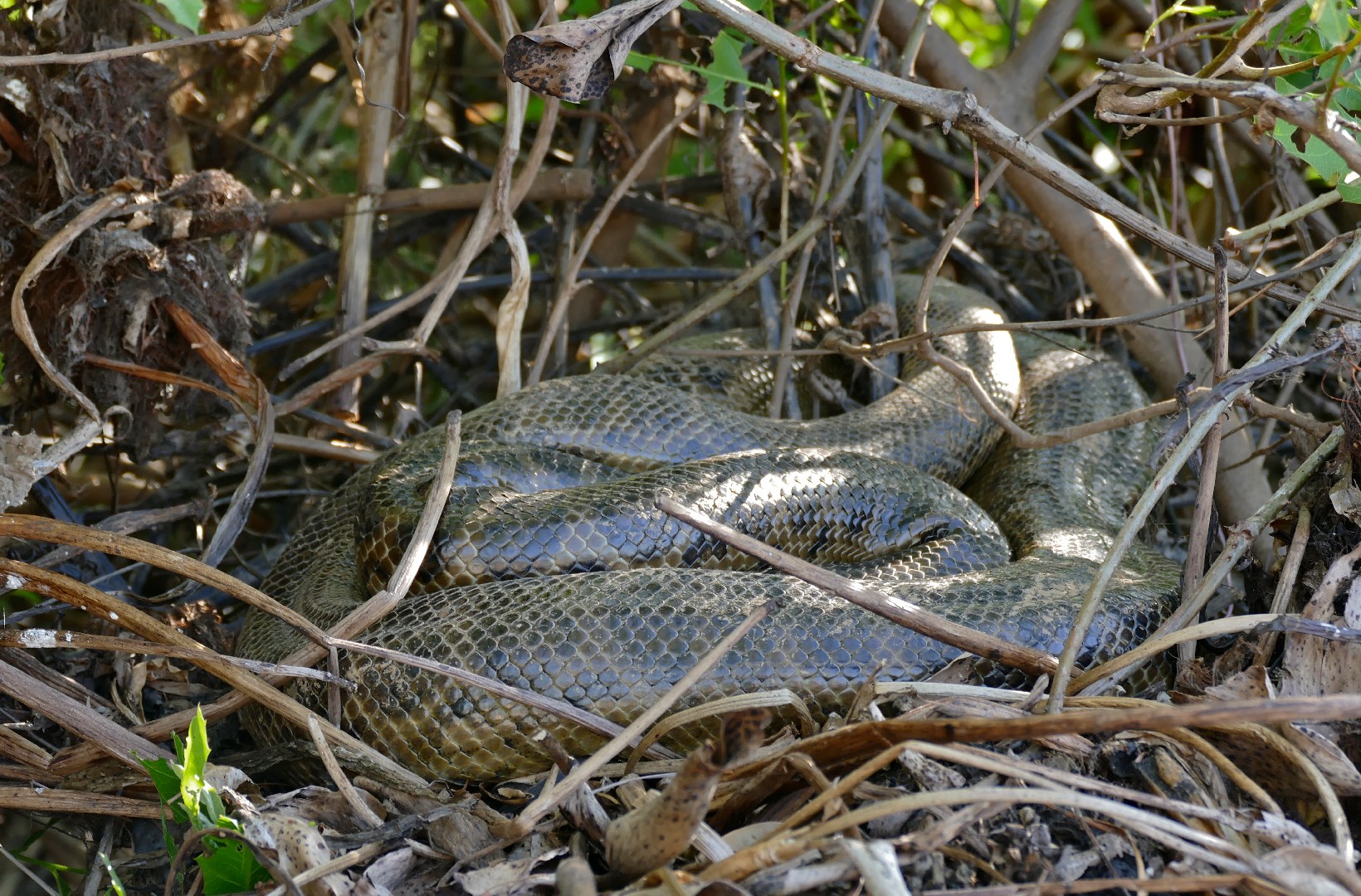Yellow anaconda
A species of Anacondas Scientific name : Eunectes notaeus Genus : Anacondas
Yellow anaconda, A species of Anacondas
Scientific name: Eunectes notaeus
Genus: Anacondas
Content
Description General Info
 Photo By Bernard DUPONT , used under CC-BY-SA-2.0 /Cropped and compressed from original
Photo By Bernard DUPONT , used under CC-BY-SA-2.0 /Cropped and compressed from original Description
The yellow anaconda (Eunectes notaeus), also known as the Paraguayan anaconda is a boa species endemic to southern South America. It is one of the largest snakes in the world but smaller than its close relative, the green anaconda. Like all boas and pythons, it is non-venomous and kills its prey by constriction. No subspecies are currently recognized.
General Info
Lifespan
15-20 years
Diet
Yellow anaconda or the Yellow Anaconda is a carnivore, primarily preying on a variety of mammals, birds and reptiles. Its exceptional constricting ability allows it to subdue significant prey, such as capybaras and caimans. It also consumes fish and amphibians.
Appearance
Yellow anaconda is a large, robust snake with smooth, uniquely patterned skin. It exhibits a striking coloration, predominantly dark green with black elliptical spots that increase in number towards the tail. This enormous aquatic creature can reach lengths of up to 3 meters. There is no significant visual difference between the sexes or among various ages.
Behavior
Yellow anaconda is a predominantly nocturnal, solitary constrictor, primarily aquatic but capable of terrestrial movement. Feeding largely on aquatic and semi-aquatic vertebrates, it employs a sit-and-wait hunting strategy, relying on its camouflaging capabilities. Lacking territorial tendencies, it doesn't defend specific areas but exhibits aggressive behavior if threatened.
Population
Stable
Scientific Classification
Phylum
Chordates Class
Reptiles Order
Lizards and snakes Family
Boas Genus
Anacondas Species
Yellow anaconda